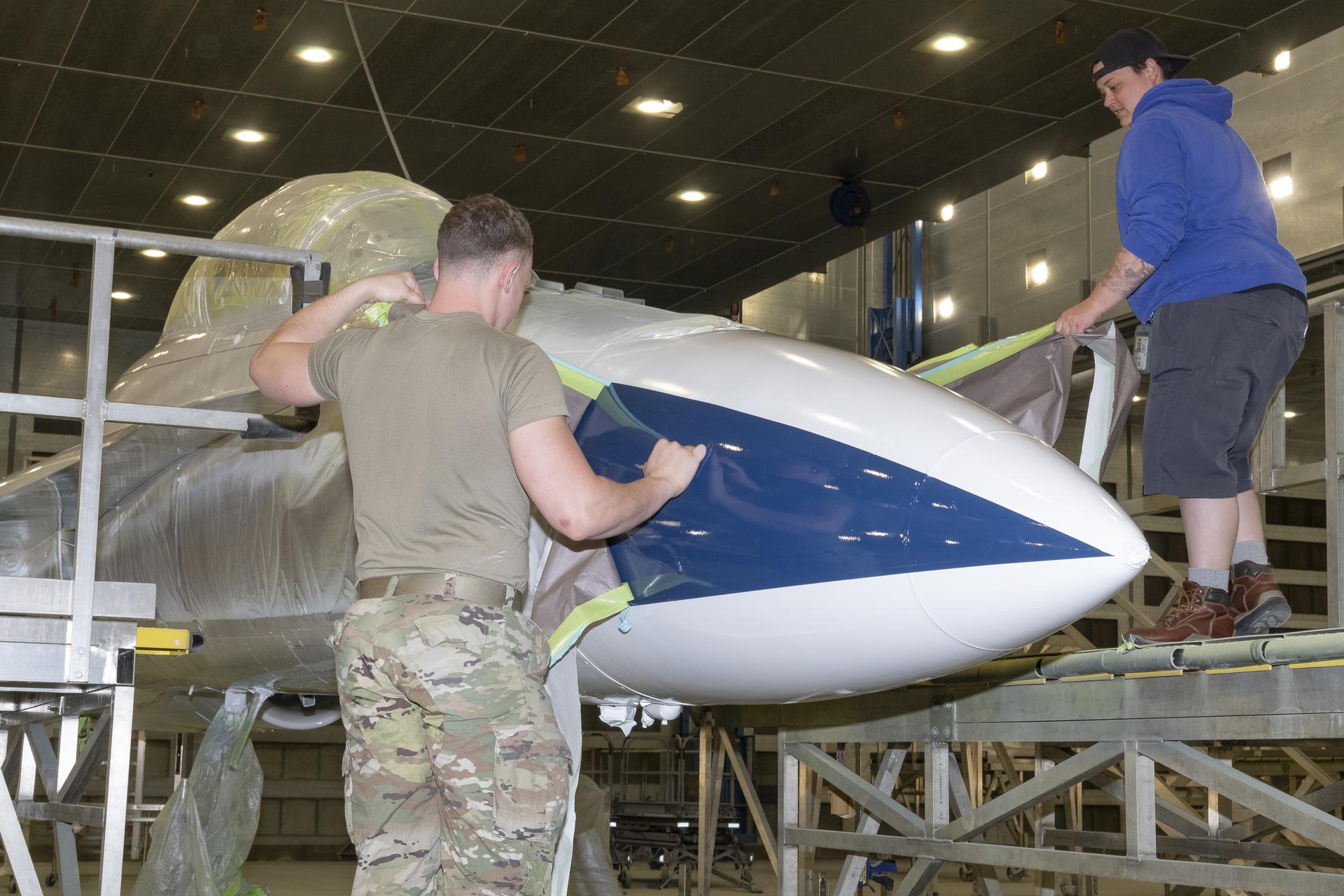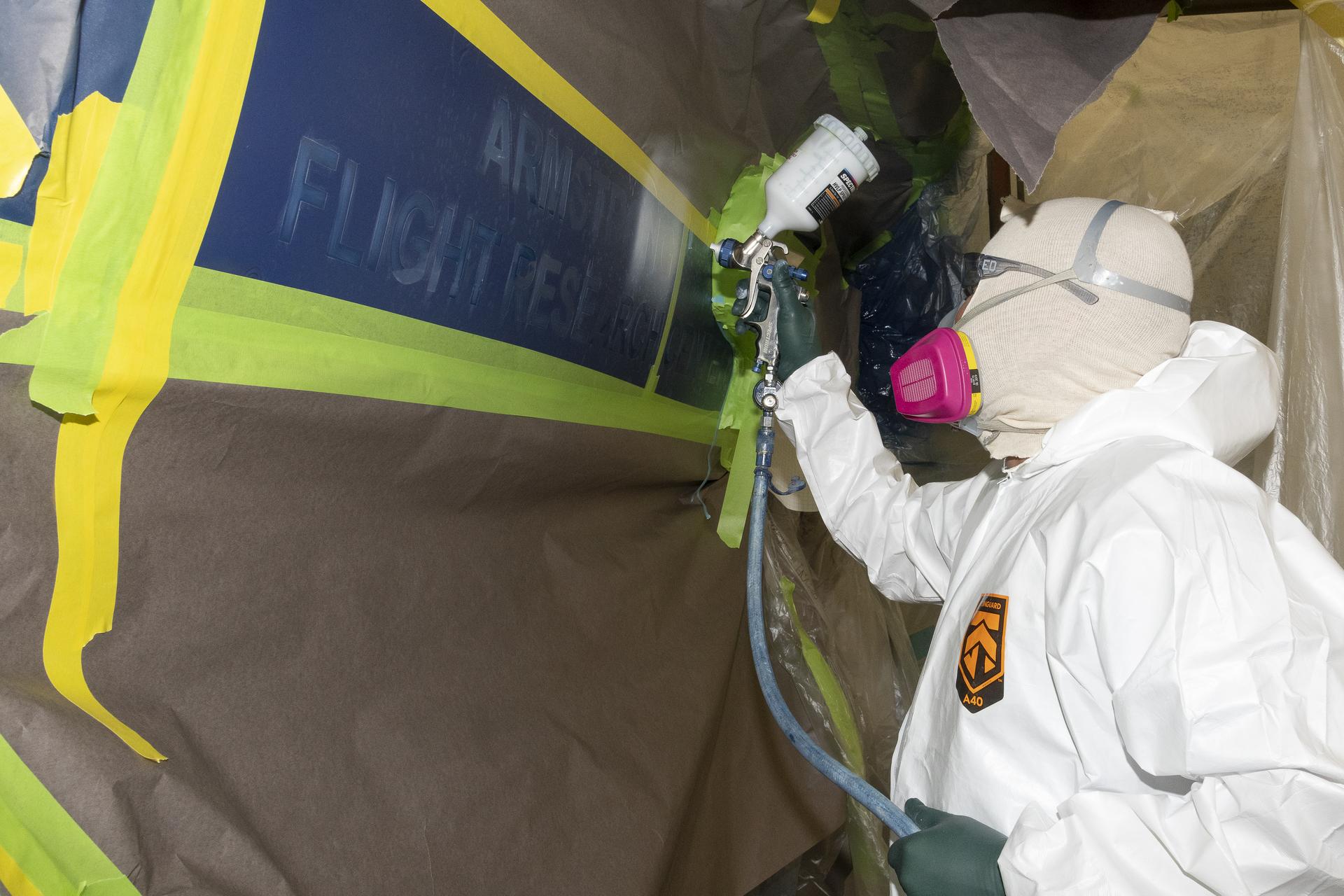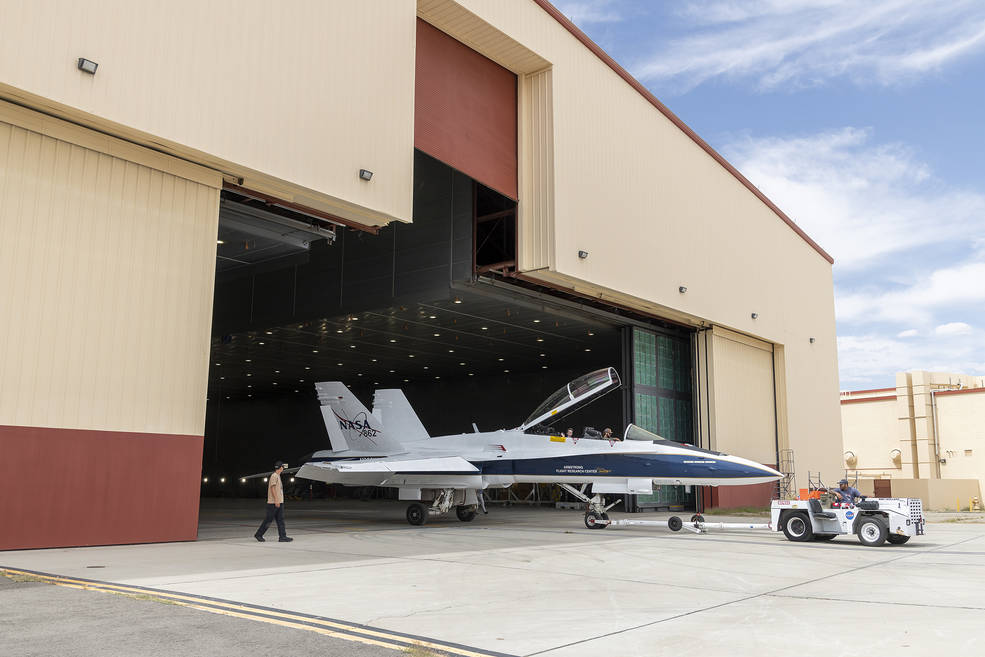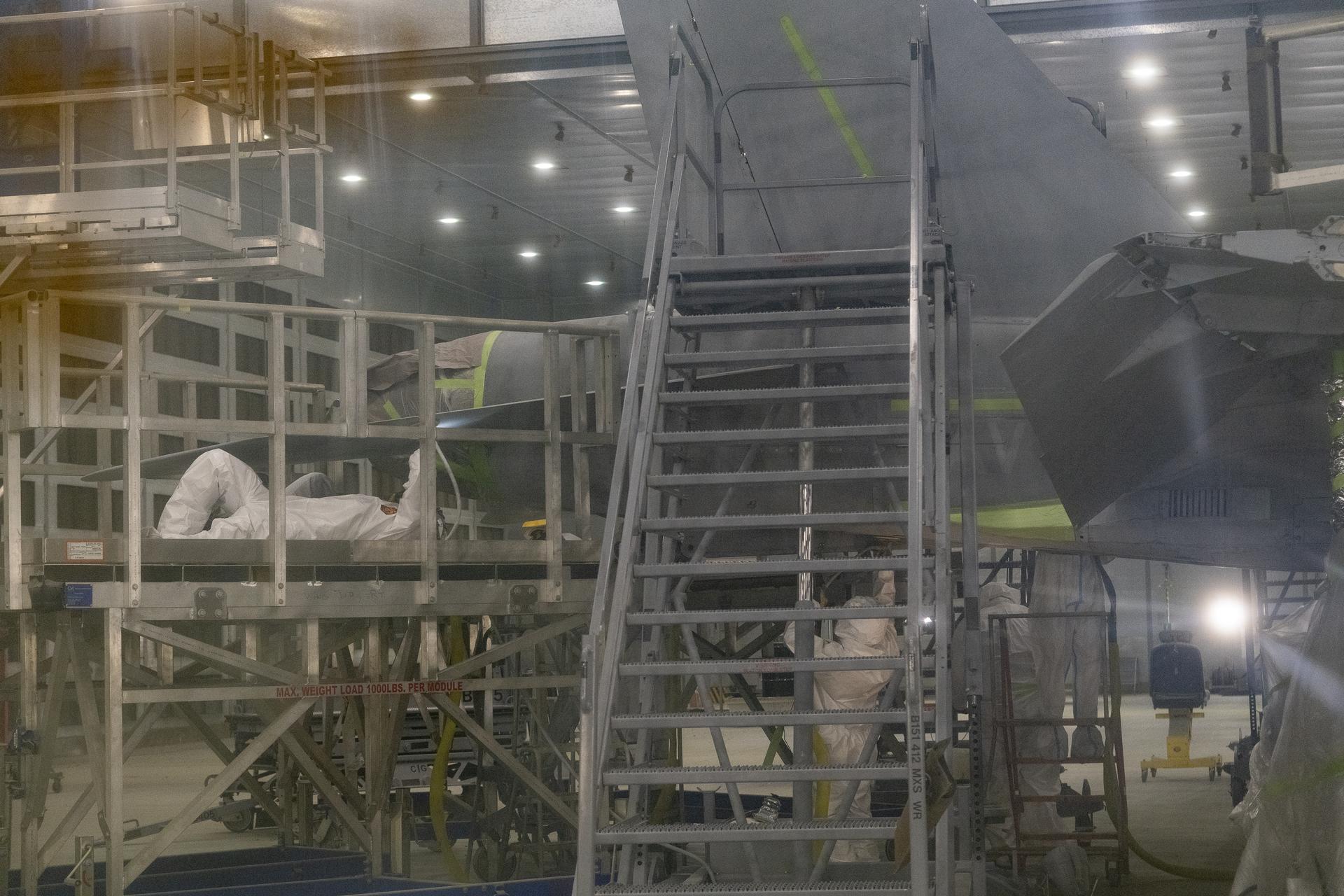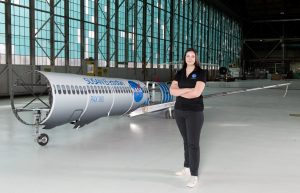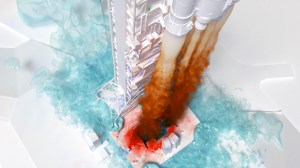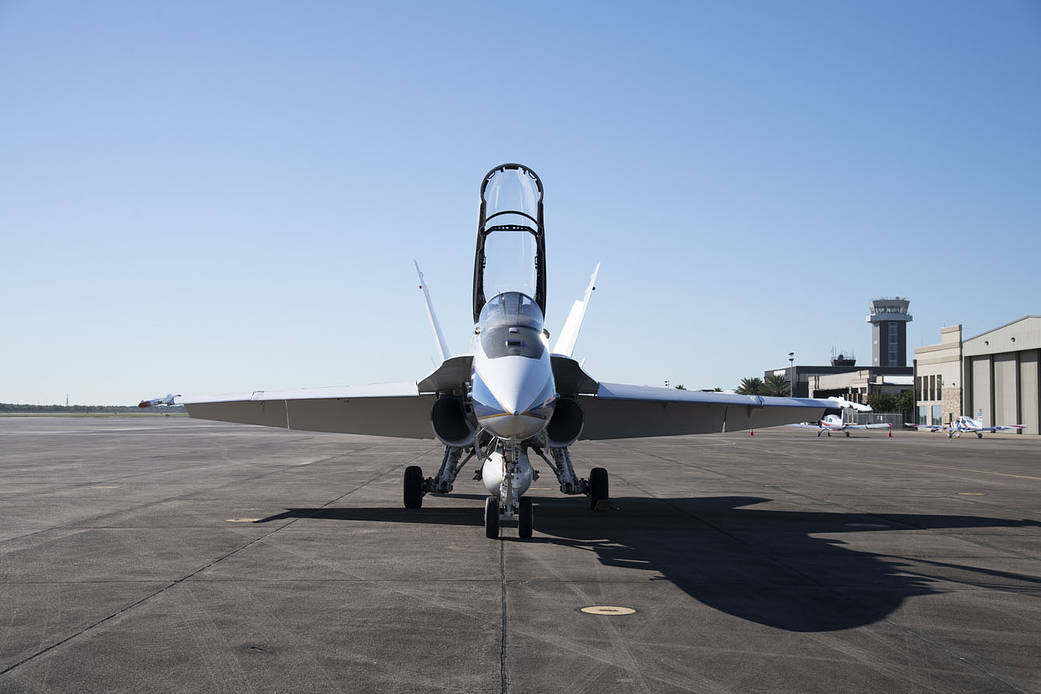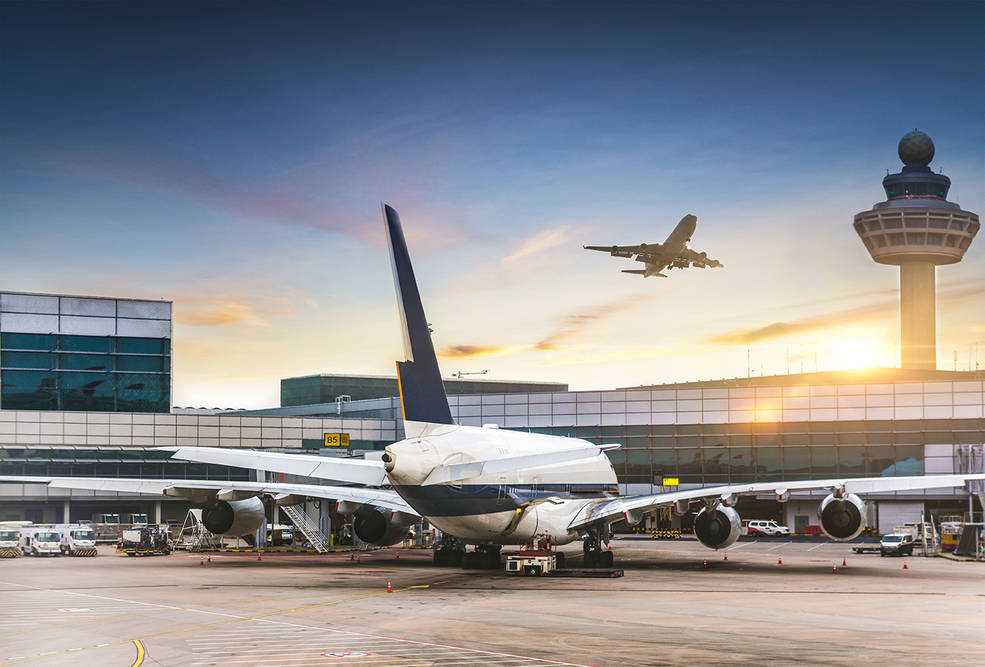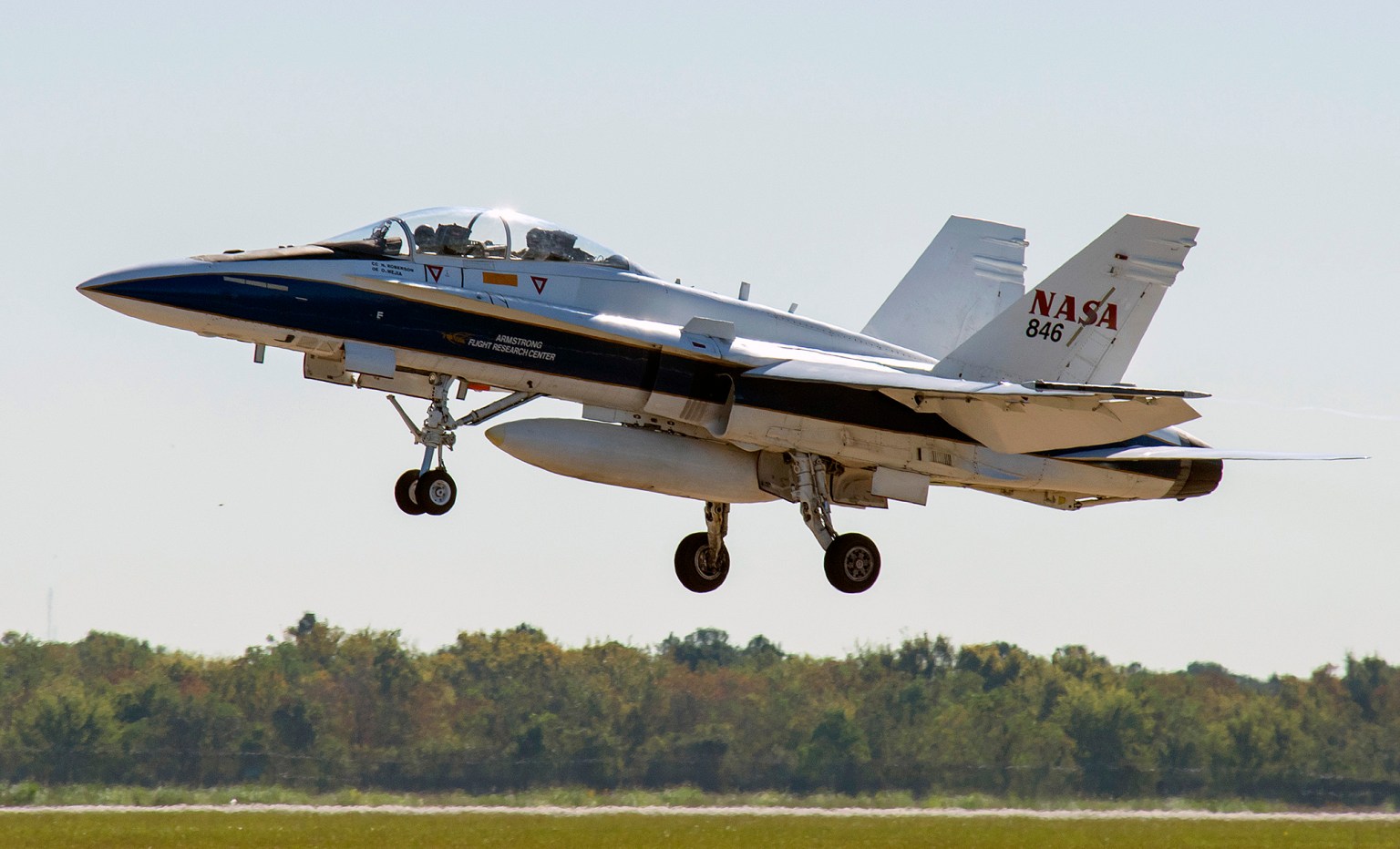An F/A-18 aircraft received from the U.S. Navy in 2021 has been rejuvenated, had its NASA colors added, and is close to flight certification at NASA’s Armstrong Flight Research Center, in Edwards, California.
Thanks to the U.S. Air Force Corrosion Control Facility on Edwards Air Force Base, also known as the Paint Barn, the F/A-18D aircraft designated NASA 862 will join the center’s stable of aircraft with its new colors. NASA 862 is intended to track, or “chase,” the quiet supersonic X-59 aircraft and provide a platform for videographers and photographers to document flights.
The long road for this aircraft’s acquisition and preparation began in 2020. Troy Asher, director for Flight Operations at NASA Armstrong, initiated an effort to replace the center’s legacy, two-seat F/A-18B models with newer aircraft. To that end, Asher tasked Jack Ly, a NASA Armstrong flight operations engineer, to evaluate several aircraft that could meet the center’s mission.
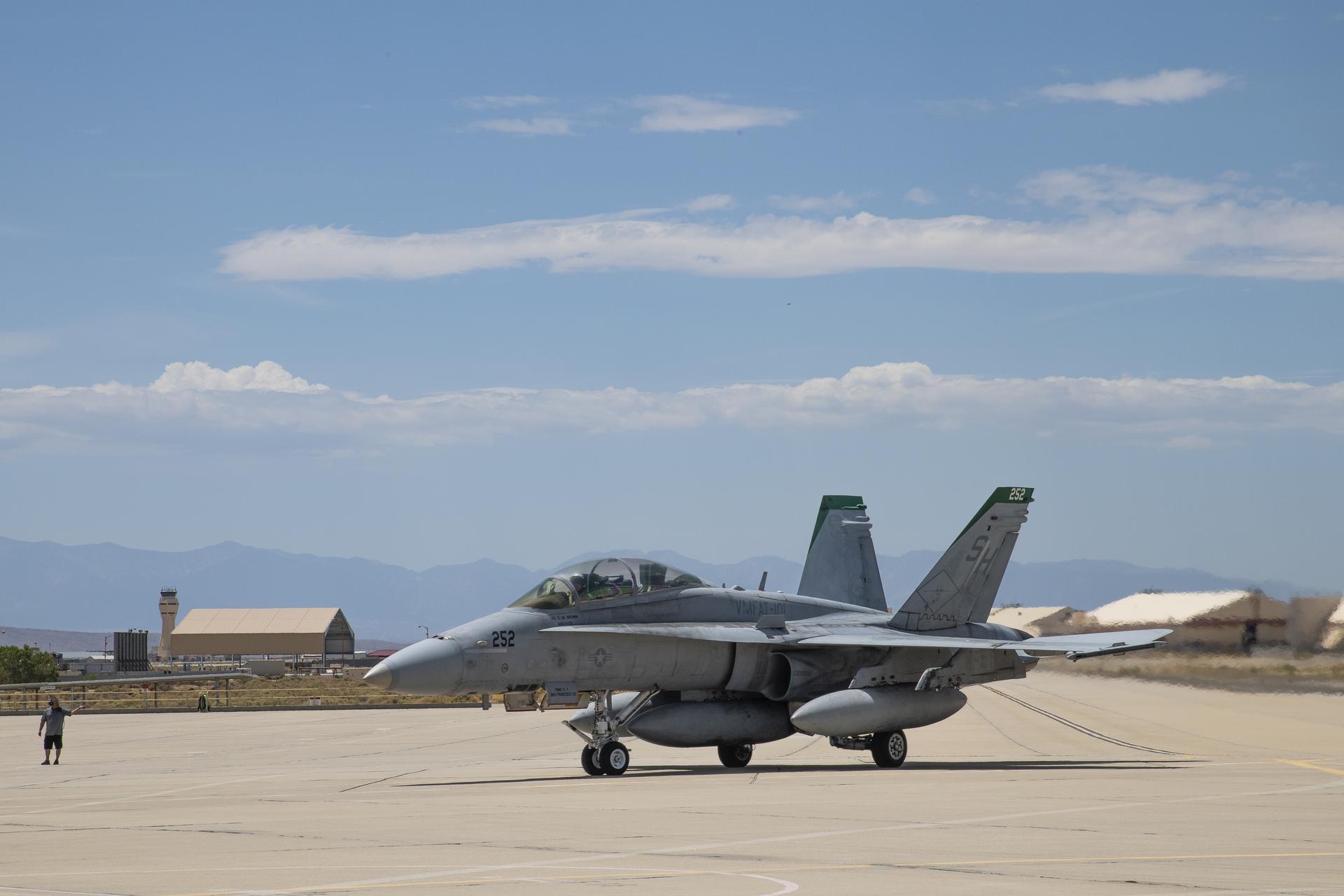
“We’re excited to have this aircraft in our fleet,” Ly said. “Our hope is in the next couple of months we will be able to integrate more instrumentation to support more missions.”
Ly identified the F/A-18D that would become NASA 862, was identified in May 2021 at its home base at the U.S. Naval Air Station Patuxent River in Maryland. After leading a team to inspect the aircraft, its airframe and component records, Ly gave his recommendation to select it. Although the F/A-18D is considered old by military standards, it is more modern the F/A-18B, and its parts are easier to find.
The aircraft spent four months having its military components removed during preparation for transfer to NASA Armstrong. The aircraft was delivered to NASA Armstrong in October 2021, and coordination continued to send it to the Naval Air Station North Island Base, near San Diego, in June 2022 for intense depot-level maintenance. NASA’s Aeronautics Research Mission Directorate and NASA Armstrong provided funding to enable the aircraft rejuvenation.
For the aircraft to fly NASA Armstrong missions, it needed an overhaul required when an aircraft flies a certain number of hours. That involves removing the wings, inspecting for corrosion, modernizing its systems, and conducting other key inspections and servicing. Technicians installed full aircraft controls in the rear cockpit to allow a second pilot to receive training or maintain proficiency. The maintenance to NASA 862 should support a life span of about 40 years for the aircraft based on NASA Armstrong usage.
NASA 862 returned to NASA Armstrong in February 2023, then made an initial trip to the Paint Barn in March for sanding, masking and preparation for painting. It then returned to the Paint Barn for the full NASA Armstrong paint scheme and the final application of safety decals and NASA and Armstrong identifications. The aircraft returned to NASA Armstrong May 15.
NASA entered the aircraft into its Aircraft Management Information System and completed weight and balance checks. The aircraft’s initial airworthiness review is expected this month. Once complete, Asher will sign its airworthiness certificate and send it to Center Director Brad Flick for final approval for the aircraft to begin flights.
A full gallery of the aircraft in the Paint Barn is here.
